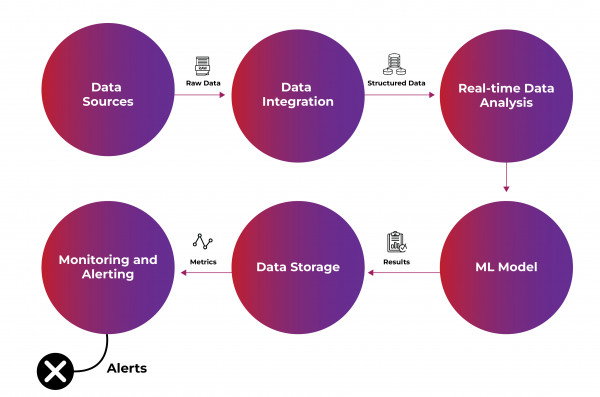Introduction: The Data Revolution in Enterprise SaaS
In the fast-paced world of Enterprise SaaS, data is the fuel that drives innovation, enhances customer experiences, and fuels business growth. As SaaS companies strive to deliver exceptional value to their customers, they are turning to DataOps—a powerful methodology that combines data management practices with agile development principles—to optimize their data operations and unleash the full potential of their data.
DataOps: The Superhero of SaaS Data Management
DataOps has emerged as a game-changing approach to managing data in the SaaS industry. By breaking down silos, improving data quality, and accelerating data delivery, DataOps empowers enterprise SaaS companies to stay ahead of the competition and drive data-driven excellence. Let’s explore the key advantages of embracing DataOps in the world of Enterprise SaaS:
Agile and Efficient Data Workflows: DataOps enables SaaS organizations to establish agile and efficient data workflows, where data moves seamlessly across applications and systems. By adopting CI/CD pipelines and automated data integration processes, SaaS teams can ensure rapid data delivery, reducing time-to-insights and enabling faster decision-making.
Enhanced Data Quality and Reliability: In the SaaS world, data quality is paramount. DataOps practices, such as data profiling, cleansing and validation, help improve data quality and reliability. By ensuring that data is accurate, consistent, and trustworthy, SaaS companies can provide their customers with reliable insights and actionable information.
Accelerated Innovation: DataOps fosters a culture of collaboration and empowers cross-functional teams to work together seamlessly. By breaking down traditional barriers between data engineers, data scientists, and business stakeholders, SaaS organizations can unlock the full potential of their teams, driving innovation and sparking new ideas that can revolutionize their products and services.
Improved Customer Experiences: DataOps enables SaaS companies to gain deeper insights into customer behavior, preferences, and needs. By leveraging data analytics, personalization techniques, and real-time data processing, SaaS organizations can deliver highly tailored and personalized customer experiences through SaaS enterprise software, fostering loyalty and satisfaction.
Efficient Compliance and Data Governance: With increasing regulations and data privacy concerns, SaaS companies must ensure strong data governance practices. DataOps provides the foundation for robust data governance, enabling organizations to implement data access controls, track data lineage, and ensure compliance with industry regulations.
Use Case: Fraud Detection in Financial Services
Let’s dive into a practical use case to understand how DataOps can drive value in the world of Enterprise SaaS. Imagine you’re a SaaS company providing a financial services platform that handles millions of transactions daily. Your goal is to implement a robust fraud detection system to identify and prevent fraudulent activities.
Note:-In this blog, we have used Google Cloud Platform (GCP) tools and services to illustrate the implementation of the DataOps architecture for the fraud detection use case. However, it’s important to note that DataOps principles can be applied across various cloud platforms, such as AWS and Azure, as well as on-premises and hybrid cloud environments. Whether you choose any cloud provider or hybrid cloud, the underlying principles of DataOps still apply. The choice of tools may vary based on the specific requirements, technology stack, and preferences of the SaaS company.
Architecture Overview: DataOps in Action
In this use case of fraud detection in financial services, let’s explore the detailed architecture and understand how each component works together to enable DataOps practices and drive effective fraud detection:

- Data Sources: The primary data source is the financial services platform, which generates transactional data. This data includes information such as transaction amounts, timestamps, customer details, and transaction metadata. External data feeds, such as credit card blacklists and IP reputation databases, are integrated to enrich the transactional data with additional insights and indicators of potential fraud. The financial services platform itself serves as the primary data source. External data feeds can be accessed through APIs or scheduled data imports. Examples of external data feeds include credit card blacklist APIs or reputation databases.
- Data Integration: Data integration tools like Apache NiFi or Google Cloud Data Fusion are used to collect, cleanse, and transform transactional data from multiple sources. These tools enable seamless data ingestion, perform data quality checks, and ensure the data is standardized and structured for further processing. Apache NiFi provides a visual interface for designing data integration workflows. It supports various connectors to extract data from different sources, perform transformations, and load it into the target systems. Google Cloud Data Fusion offers a similar capability with a drag-and-drop interface designed explicitly for GCP.
- Real-time Data Analysis: Real-time data processing capabilities are essential for timely fraud detection. Apache Spark, a distributed data processing framework, is employed for real-time data analysis. With its ability to handle large volumes of data and perform complex computations in parallel, Spark enables efficient and scalable fraud detection algorithms. Spark Streaming or Google Cloud Dataflow can be utilized to process and analyze incoming transactions in near real-time. Apache Spark provides libraries and APIs for real-time stream processing and analytics. Spark Streaming allows the processing of live data streams, while Google Cloud Dataflow provides a managed service for real-time data processing on GCP. These tools handle the complexities of data parallelism, fault tolerance, and resource management.
- Machine Learning for Fraud Detection: Machine learning models play a crucial role in fraud detection using SaaS enterprise solutions. Algorithms such as anomaly detection, pattern recognition, and predictive modeling are implemented to identify suspicious activities. Tools like TensorFlow or Scikit-learn can be used for model training and deployment. These models are trained on historical transaction data, enriched with external data feeds, and continuously updated with new data to improve their accuracy over time.TensorFlow is a popular open-source machine learning framework that provides extensive support for training and deploying models. Scikit-learn is another widely used Python library for machine learning tasks. These tools offer various algorithms and APIs to develop fraud detection models.
- Data Storage and Analysis: Google BigQuery, a serverless data warehouse, serves as the storage and analysis platform. It provides a scalable and cost-effective solution for storing and querying large volumes of transactional data. BigQuery enables advanced analytics and complex SQL queries to identify patterns, detect anomalies, and generate fraud alerts. BigQuery provides high-performance analytics and supports real-time data ingestion using features like streaming inserts.
- DataOps Practices: Throughout the architecture, DataOps practices are implemented to ensure smooth data operations. Continuous Integration and Continuous Deployment (CI/CD) pipelines, managed by Jenkins or GitLab, automate the deployment of data integration processes, data analysis workflows, and machine learning model updates. This ensures the data pipelines are well-maintained and consistent and deliver reliable results. Jenkins and GitLab are popular CI/CD tools that automate the deployment and orchestration of various components in the data pipeline. They enable version control, automated testing, and continuous delivery of data integration and analysis workflows.
- Monitoring and Alerting: To ensure the health and performance of the fraud detection system, monitoring and alerting tools like Prometheus and Grafana are used. These tools provide real-time visibility into system metrics, data processing bottlenecks, and model performance. Alerts can be set up to notify the relevant teams in case of any anomalies or issues detected. Prometheus is an open-source monitoring system that collects and stores metrics from various components in the architecture. Grafana is a visualization tool that creates interactive dashboards to monitor and analyze metrics. These tools can be integrated with other monitoring solutions available in the cloud platform.
By leveraging this comprehensive architecture, the SaaS company can effectively detect and prevent fraudulent activities in real time. The DataOps approach ensures seamless data integration, efficient data analysis, and continuous model improvement. With a robust fraud detection system in place, the SaaS company can safeguard its financial services platform, protect its customers, and maintain trust in its services.
Conclusion: Embrace DataOps for SaaS Success
In the dynamic world of Enterprise SaaS management, DataOps is the superhero that can unlock the full potential of your data. By adopting DataOps practices, SaaS organizations can optimize their data workflows, improve data quality, foster innovation, and deliver exceptional customer experiences. Remember, data is the lifeblood of your SaaS platform, and DataOps is the key to harnessing its power. Embrace DataOps, empower your teams, and embark on a data-driven journey that will propel your SaaS organization to new heights of success.
“DataOps: The secret sauce for SaaS success! It’s like having a magician’s wand that turns data into insights and customers into fans.” – Unknown SaaS Enthusiast.



